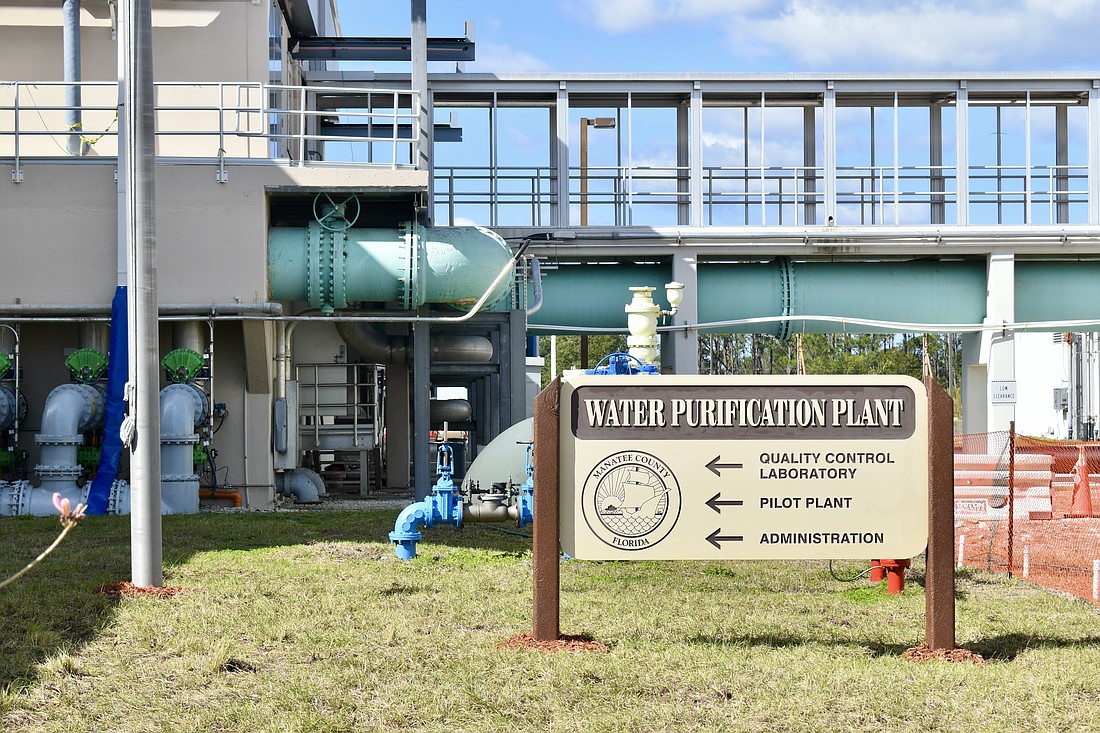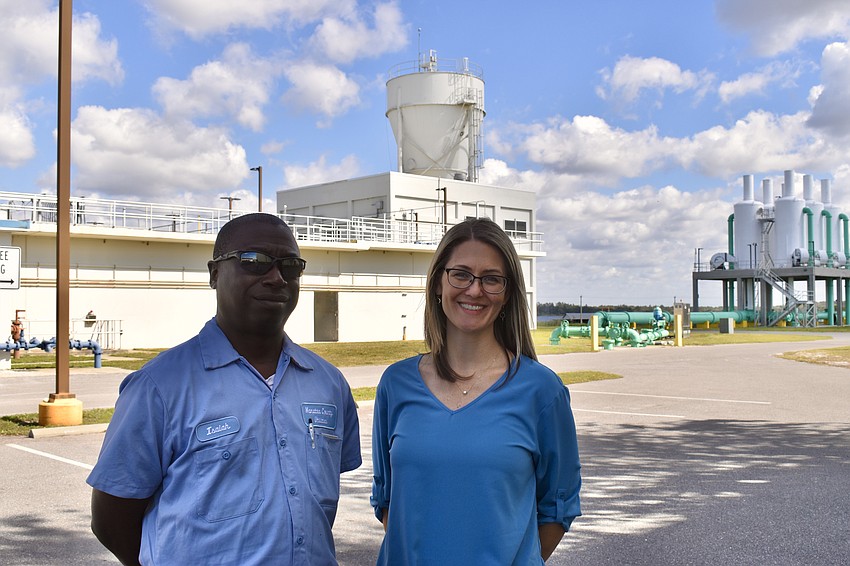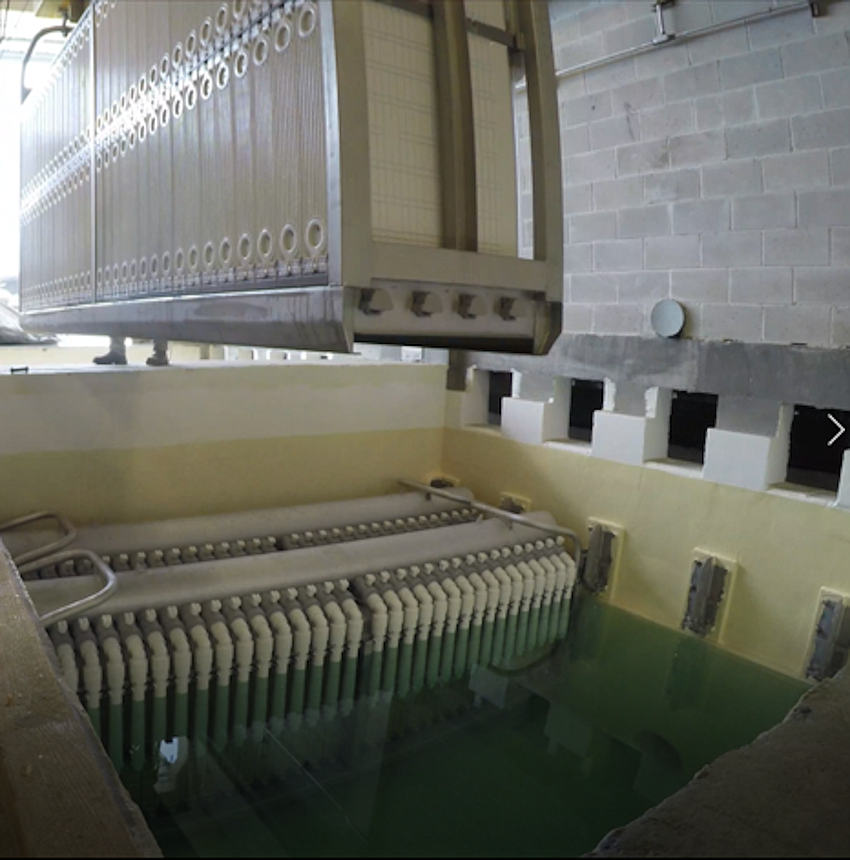- July 26, 2024
-
-
Loading

Loading

Isaiah Moss said people assume his job is boring, but they’re wrong, especially when he’s scheduled to work on Super Bowl Sunday.
As a water treatment operator at the Lake Manatee Water Treatment Plant, Moss logs about 15,000 steps per shift roaming the facility that sits on 75 acres off of Waterline Road.
Moss looks and listens for anything out of the ordinary. He knows and can mimic the sounds a water pump makes because switching out a bad one can save a day’s worth of work in under a minute.
“It’s not a job. It’s a hobby. I just get paid to do it,” Moss said.
He once surprised himself and coworkers by guessing the exact pH of a water sample before it was tested, and he said he prefers the action at the water plant to watching television on Super Bowl Sunday.
When halftime starts, the demand for water nearly triples and water levels in the tanks drop up to two feet.
“It’s as if the county decided — three, two, one — we’re all going to flush the toilets at the same time,” Moss said. “Then, it comes right back, but it’s just awesome to see.”

The water from the treatment plant serves over 320,000 Manatee County residents and wholesale customers in neighboring counties. Tropicana is one of the plant’s biggest users.
The county invested $53 million into retrofitting the plant with a new ultrafiltration system. The ceremonial “First Drink” was served to commissioners and county staff on Jan. 31 at the plant.
“Thank you to all the forward-thinking folks in the utilities department for bringing this idea forward,” Commission Chair Mike Rahn said during the ceremony. “(They) saw the benefits of how these membranes are going to serve our water quality and provide that clean, clear drinking water for all of our citizens.”
Super Bowl Sundays come once a year, but water treatment never stops. Providing water for over 300,000 people makes the job a bit more intense than Moss would admit.
“We’re the only (provider) for all of Manatee County,” Water Division Manager Kathryn Quilty said. “No one’s coming to rescue us and bring in water to help us out. The operators are on the ball 24/7 to make sure we keep running. It’s high pressure.”
The upgrade will ease some of the stress because less contaminants will get through the filtration process. Surface water media filters have been replaced by submerged ultrafiltration membranes.
“The media filters have the potential to allow larger particles through if not operated and maintained to their optimal performance,” Deputy Director of Utilities Katie Gilmore said.
The membranes act as physical barriers. Nothing larger than .02 microns can pass through them. A micron is equal to one-millionth of a meter.
Moss said the pore size will keep the plant "two steps ahead" when it comes to compliance with state and federal regulations.
Part of the job is following monitoring and regulation guidelines set by the Department of Environmental Protection, which sets the standard for drinking water and dictates the levels of allowable contaminants.
Quilty said the upgrade will keep the public safer by stopping pathogens. It won’t change the aesthetics of the water, which is its taste and odor.
For example, giardiasis is a waterborne disease that can cause minor to severe gastrointestinal symptoms. Due to the .02 pore size, the parasite can’t pass through the membranes.
Gilmore said the retrofit took five years of working to build the improvements while still maintaining compliance with water regulations and meeting the increased demand from a booming population.
At times, staff had to take certain portions of the plant offline and reroute water within the facility, but she said the result is “more consistent water quality with less operator intervention.”
The installation began five years ago, but staff had been seeking solutions to an impending problem since 2006. Particles 250 times larger than .02 microns can find pathways through the sand, anthracite coal and gravel inside media filters, which makes the system outdated, but still usable.
The issue for the county was that its media filters were installed in the 1970s and 1980s and had to be replaced or rehabbed anyway. So given the choice, staff and commissioners decided to upgrade the process.
Gilmore described the water as “trickling” through the media filters versus being “pulled” through the membranes. The membranes are porous, hollow fiber tubes with a vacuum attached to the inside. They're stored in cassettes and submerged under water.

The ultrafiltration system uses pumps and has a siphon mode. The siphon mode is used during normal operations when the demand is not at full capacity. Halftime on Super Bowl Sunday causes a higher demand. In that case, the pumps switch on.
The automated backwash feature runs roughly every five minutes. Quilty likened the membranes to a straw. As the water is being sucked through them, the larger particles stick to the sides. When the flow of water is reversed, the particles are pushed down into a basin.
Once the particles are in the basin, the basin is drained into a backwash pond. The particles that have settled into solids are removed, dried and disposed of, and the remaining water is sent back to the head of the treatment plant to start the process again.
“The majority of the water we can reuse. We don’t want to waste water,” Quilty said.
Since the project is complete, Manatee County now has the largest ultrafiltration plant in Florida.